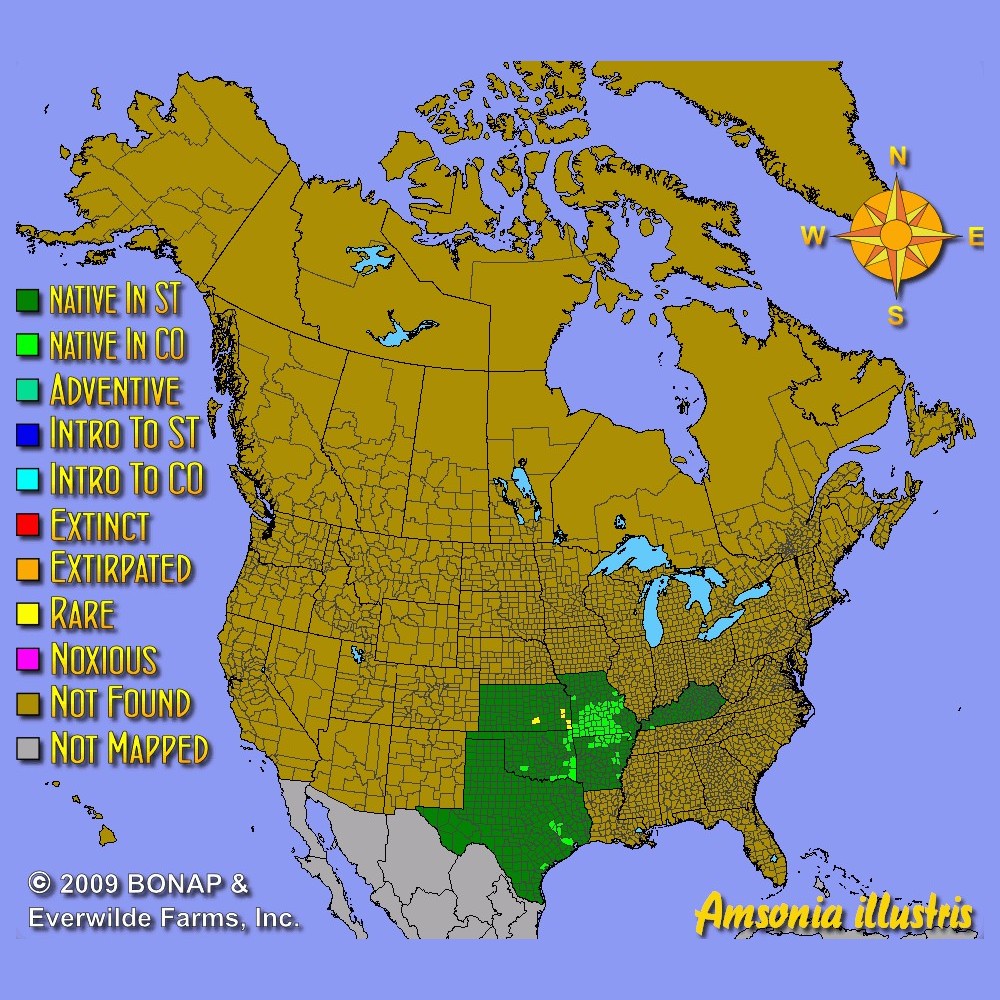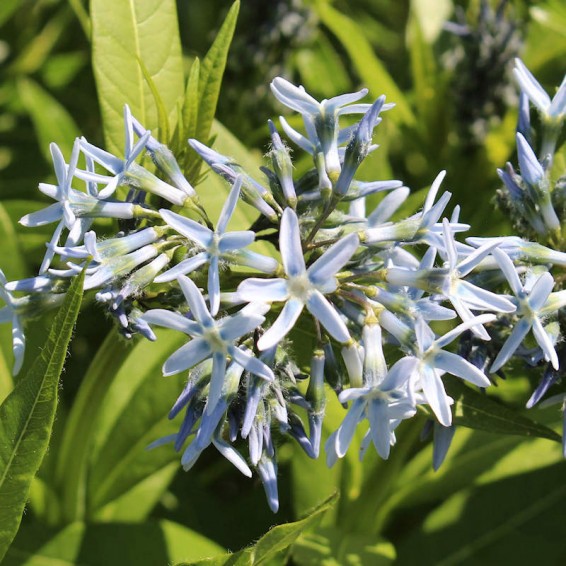Blue Star Seeds
- HOW TO GROW
- FAST FACTS
- REVIEWS
HOW TO GROW
Sowing: These Blue Star wildflower seeds should be stratified for best germination; mix the seed with moist sand and store them in the refrigerator for 30 days before planting. Direct sow the stratified seed after the last spring frost. For fall planting, direct sow Blue Star wildflower seeds with no pretreatment; it will remain dormant until spring. Thin or transplant seedlings.
Growing: This plant adapts to almost any soil, though it prefers moist soil and full sun or partial shade. It tolerates some drought, though regular watering will benefit its growth. When grown in shade or rich soil, the stems tend to droop and may need staking or support. After flowering, the stems can be cut down to 10" for bushier, neater growth. Keep in mind that the plants do not rebloom, and the stems will need to be left intact in order to save seed.This plant is usually disease free. Though it does tend to reseed itself, it does not become invasive. After severe years of growth, the plant develops a neat vase-like shape. These flowers attract swallowtail butterflies and bees, and resist deer.
Harvesting: For fresh flowers, cut the stems just after the blossoms open.
Seed Saving: Collect the seed pods as soon as they begin to dry and turn brown; the mature seeds will also be brown. Spread the pods out to dry completely, away from direct sunlight. Thresh them to remove the seed from the pods. Store the cleaned seed in the refrigerator for up to four years.
FAST FACTS
Common Names: Ozark Bluestar, Shining Blue Star
Latin Name: Amsonia illustris
Species Origin: US Native Wildflower
Type: Native Wildflowers
Life Cycle: Perennial
USDA Zones: 6, 7, 8, 9
US Regions: Midwest, Southeast
Seeds per Ounce: 3,900
Stratification: Cold/Wet for 4 Weeks
Germination Ease: Stratify 4 Weeks
Sunlight: Full Sun, Part Sun
Height: 36 Inches
Color: Blue
Bloom Season: Blooms Early Spring
Uses: Attracts Pollinators, Attracts Butterflies
bummer
received my packet of 60 seeds, but only found less than 30.
DESCRIPTION

HOW TO GROW
Sowing: These Blue Star wildflower seeds should be stratified for best germination; mix the seed with moist sand and store them in the refrigerator for 30 days before planting. Direct sow the stratified seed after the last spring frost. For fall planting, direct sow Blue Star wildflower seeds with no pretreatment; it will remain dormant until spring. Thin or transplant seedlings.
Growing: This plant adapts to almost any soil, though it prefers moist soil and full sun or partial shade. It tolerates some drought, though regular watering will benefit its growth. When grown in shade or rich soil, the stems tend to droop and may need staking or support. After flowering, the stems can be cut down to 10" for bushier, neater growth. Keep in mind that the plants do not rebloom, and the stems will need to be left intact in order to save seed.This plant is usually disease free. Though it does tend to reseed itself, it does not become invasive. After severe years of growth, the plant develops a neat vase-like shape. These flowers attract swallowtail butterflies and bees, and resist deer.
Harvesting: For fresh flowers, cut the stems just after the blossoms open.
Seed Saving: Collect the seed pods as soon as they begin to dry and turn brown; the mature seeds will also be brown. Spread the pods out to dry completely, away from direct sunlight. Thresh them to remove the seed from the pods. Store the cleaned seed in the refrigerator for up to four years.
FAST FACTS
Common Names: Ozark Bluestar, Shining Blue Star
Latin Name: Amsonia illustris
Species Origin: US Native Wildflower
Type: Native Wildflowers
Life Cycle: Perennial
USDA Zones: 6, 7, 8, 9
US Regions: Midwest, Southeast
Seeds per Ounce: 3,900
Stratification: Cold/Wet for 4 Weeks
Germination Ease: Stratify 4 Weeks
Sunlight: Full Sun, Part Sun
Height: 36 Inches
Color: Blue
Bloom Season: Blooms Early Spring
Uses: Attracts Pollinators, Attracts Butterflies
Reviews
Review
bummer
received my packet of 60 seeds, but only found less than 30.




